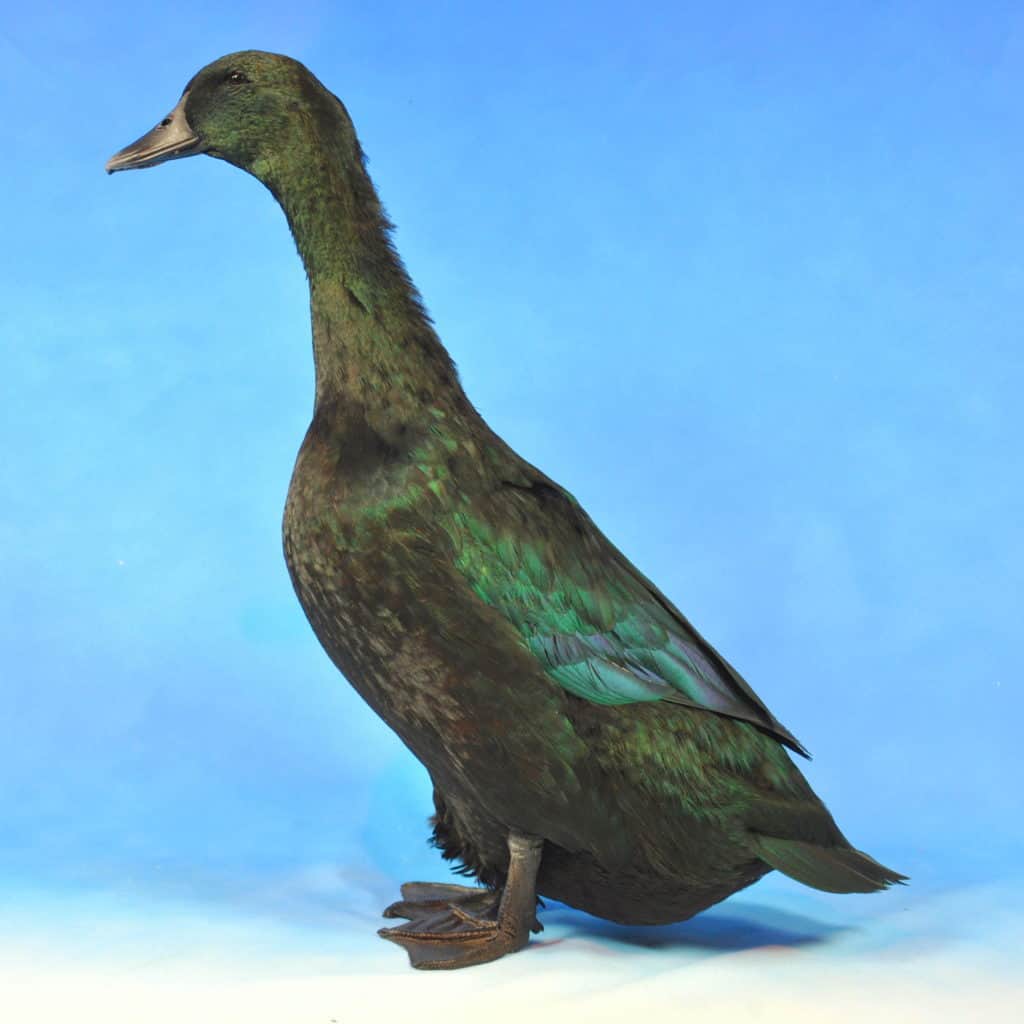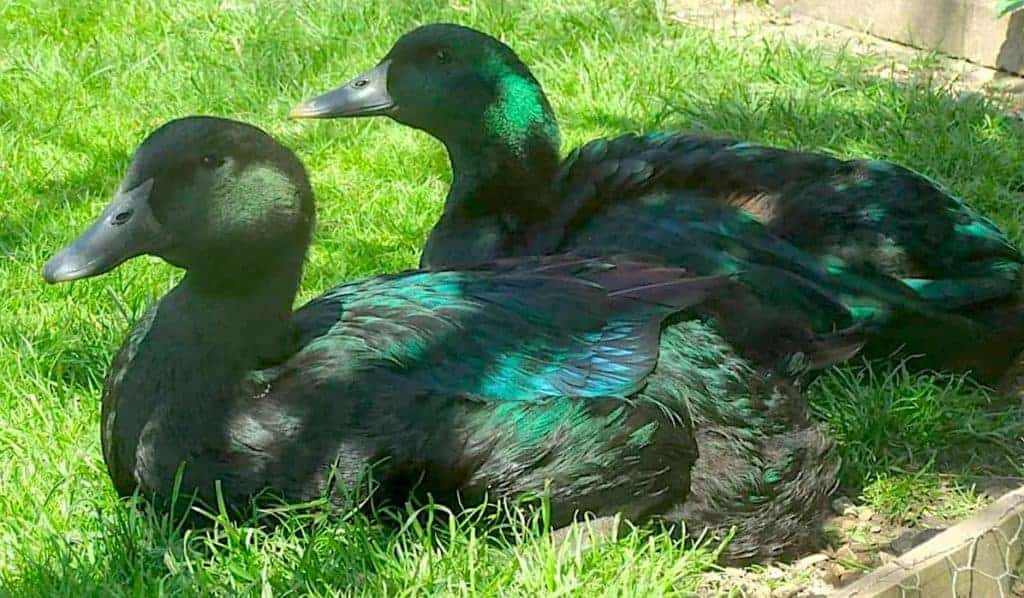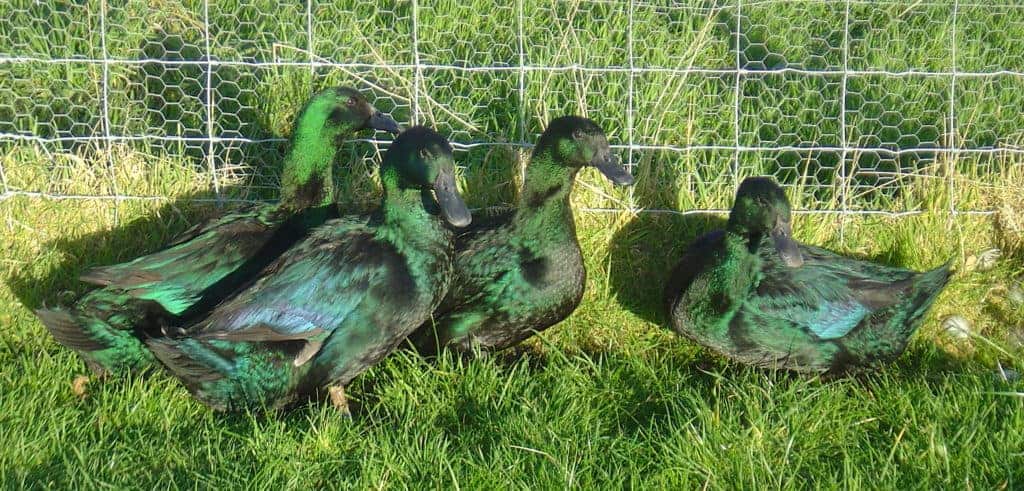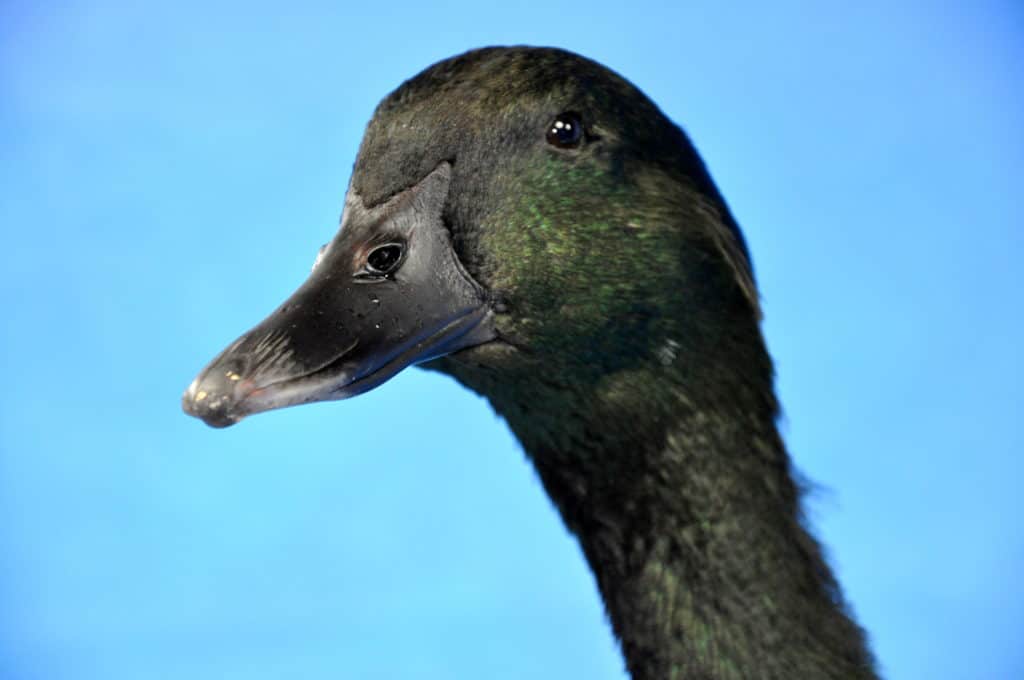Cayuga


Heavy duck breed
Domesticated Mallard Anas platyrhynchos (x American Black Duck Anas rubripes?)
This breed takes its name from Cayuga Lake (which is itself named after the native Cayuga People). Some assumptions are made that it is partly descended from the American Black Duck, which is the closest wild relative of the Mallard. The Cayuga drake develops a tail curl like a Mallard, which the American Black Duck does not.
The breed was was first mentioned in 1809, with other records mid-century. Since that time the fabulous beetle-green lustre on the black plumage has been much sought after. It is caused by refraction of light on the structure of the feathers. This is also seen in the Black East Indian Duck, which is a bantam breed.

The drakes tend to retain their black plumage better than the females which can develop white patches as they get older. It seems that unfortunately the birds with the brightest sheen tend to turn white earlier. This can be selected against, and some birds do remain black into later life.

Black is one of several genetic traits that has been studied in domestic ducks derived from the Mallard, there is a simple guide here.
The Cayuga is a heavy breed with drakes weighing 3.6 kg (8 lb) and the ducks weighing 3.2 kg (7 lb). When the ducks are in full lay, you can expect between 50-100 eggs per year. The earlier eggs have a washable dark pigment on the shells which becomes less intense as the season progresses.